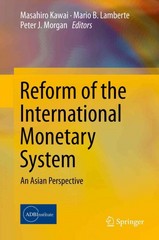a) What is the Net Present Value (NPV) of each investment? Which investment (if either) should the company undertake? b) David approaches Diana for a favor. David says that the solar lighting project is a 'pet project of his boss, and David really wants to get the project approved to curry favor wi his boss. He suggests to Diana that they roll their two projects into single proposal Th cash flows for this combined project would simply equal the sum of the two individu projects. Calculate the NPV of the combined projects. Does it appear to be worth doing? Would you recommend investing in the combined project? c) Do the net present value (NPV) and internal rate of return (IRR) always agree with respect to accept-reject decisions; with respect to ranking decision? Explain. Question 2 Since its inception, Eco Plastic Company has been revolutionizing plastic and trying to do it part to save the environment. Eco's founder, Marion Cosby, developed a biodegradable plastic that her company is marketing to manufacturing companies throughout the east coast penin Malaysia. After operating as a private company for 6 years, Eco went public in 2012 and is list on the Kuala Lumpur Stock Exchange (KLSE). As the chefinancial officer of a young company with lots of investment opportunities, Eco's CFO closely monitors the firmst of capital. The CFO keeps tabs on each of the individual costs of Eco's three main financing sources: long-term debt, preferred stock and common stock. The target capital structure for Eco is given by the weights in the following table: Source of capital Weight Long-term debt 30% Preferred stock 20 Common stock equityo Total 100 At the present time, Eco can raise debt by selling 20-year bonds with a RM1,000 par value and 10.5% annual coupon interest rate. Eco's corporate tax rate is 40%, and its bond generally require an average discount of RM45 per bond and floatation costs of RM32 per bond wh being sold. Eco's outstanding preferred stock pays a 9% dividend and has a RM95-per share par value. The cost of issuing and selling additional preferred stock is expected to be RM7 per sha Because Eco is a young firm that requires lots of cash to grow it does not currently pay dividend to common stockholders. To track the cost of common stock the CFO uses the capit asset pricing model (CAPM). The CFO and the firm's investment advisors believe that the appropriate riske rate is 4% and that the market's expected return equals13%. Using data from 2012 through 2015, Eco's CFO estimates the firm's beta to be 1.3. Although Eco's current target capital structure includes 20% preferred stock, the company is considering using debt financing to retire the outstanding preferred stock, thus shifting t target capital structure to 50% long-term debt and 50% common stock. If Eco shifts its capit mix from preferred stock to debt, its financial advisors expects its beta to increase to 1.5







